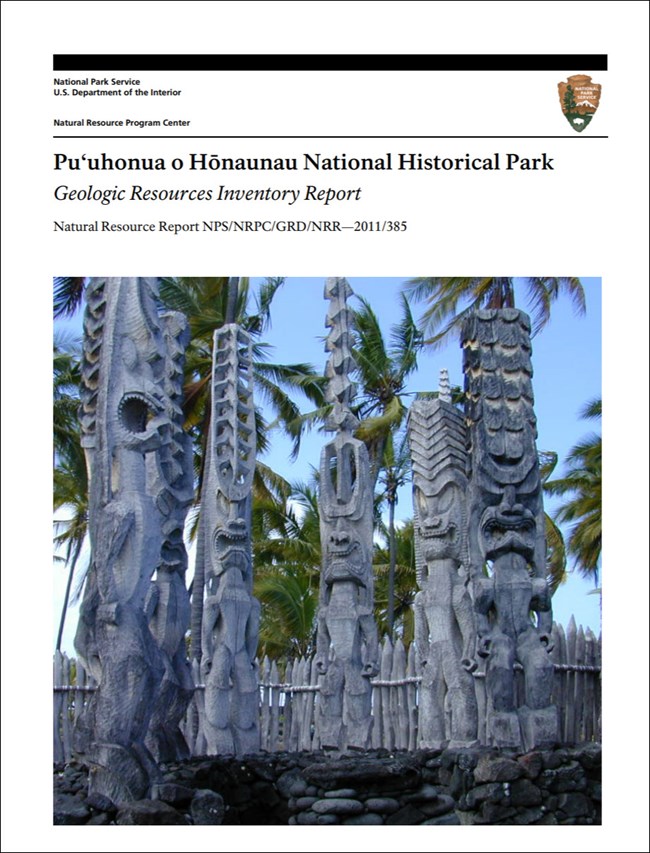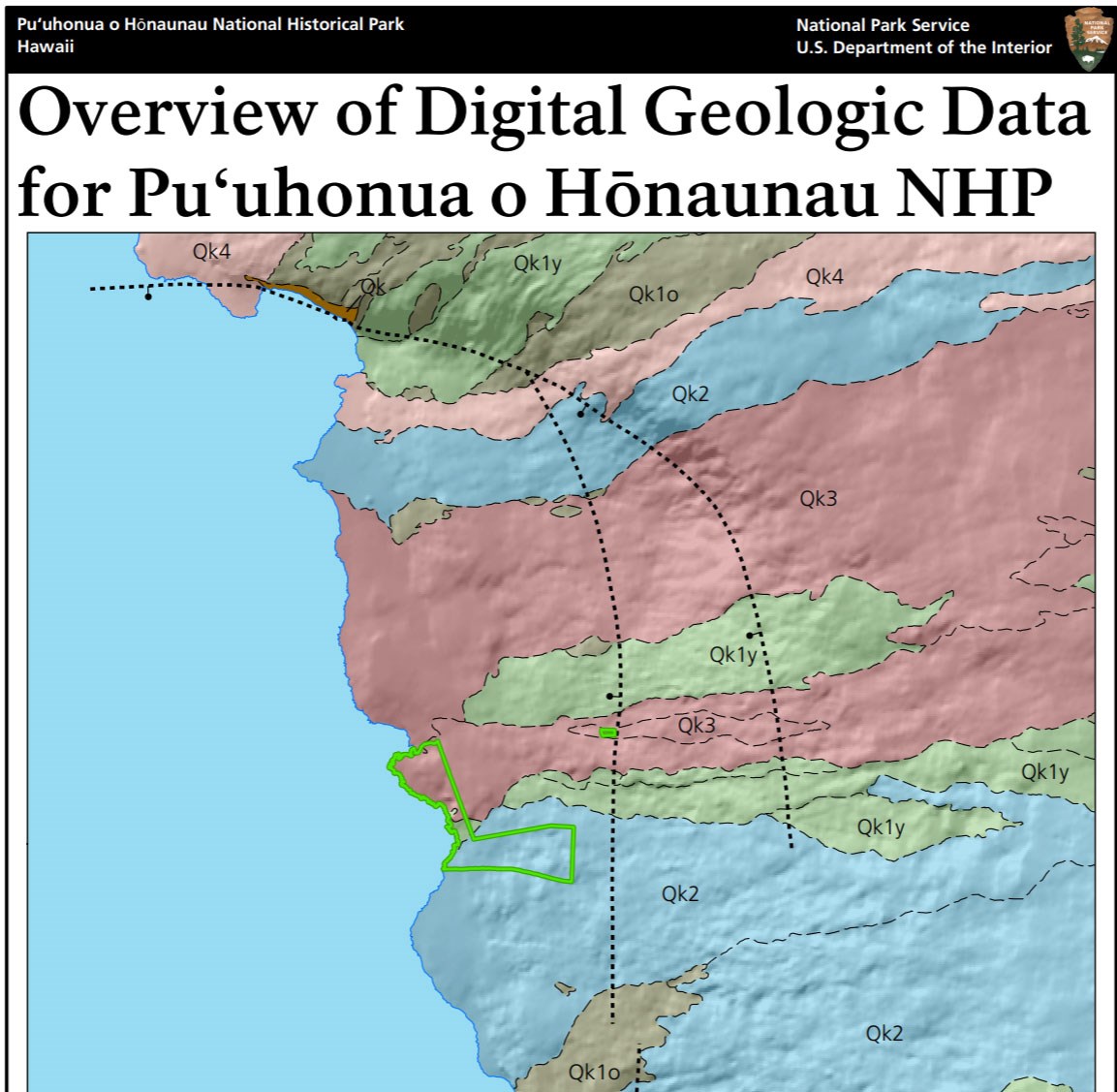Last updated: July 15, 2024
Article
NPS Geodiversity Atlas—Pu'uhonua o Honaunau National Historical Park, Hawaii
Geodiversity refers to the full variety of natural geologic (rocks, minerals, sediments, fossils, landforms, and physical processes) and soil resources and processes that occur in the park. A product of the Geologic Resources Inventory, the NPS Geodiversity Atlas delivers information in support of education, Geoconservation, and integrated management of living (biotic) and non-living (abiotic) components of the ecosystem.

Introduction
Pu‘uhonua o Hōnaunau National Historical Park (PUHO) is located on the west coast of the island of Hawai‘i about 35 km (22 mi) south of Kailua-Kona. Originally established as City of Refuge National Historical Park on July 26, 1955, the park was renamed on November 10, 1978, and covers approximately 170 hectares (420 acres) (National Park Service 2016). The word “Pu‘uhonua” means place of refuge, and until the death of King Kamehameha the Great in 1819 the site of PUHO was considered sacred ground for vanquished Hawaiian warriors, non-combatants, and breakers of “kapu” (ancient Hawaiian laws of conduct) could escape death (Thornberry-Ehrlich 2011d). In old Hawai‘i, kapu governed all aspects of society and the punishment for violators was swift and severe—the land of Pu‘uhonua offered the only option for survival by swimming across Kealakekua Bay. Within the park boundaries of PUHO are ancient housing structures, royal fishponds, coconut groves, and scenic shores. Preserved religious relics at PUHO include abandoned temples and carved wooden images (“Ki‘i”) containing the bones of 23 chiefs of ancient Hawaiian society that are believed to infuse the area with their power.
Geologic Setting
Situated on the western flank of Mauna Loa, the seaward-sloping landscape of Pu‘uhonua o Hōnaunau National Historical Park predominantly consists of young volcanic rocks of the Pleistocene–Holocene-age Ka‘ū Basalt. The Ka‘ū Basalt originated from the Mauna Loa volcanic center and forms relatively low-relief lava flows and broad benches along the shore that are mantled by pockets of sandy beaches and rocky shorelines covered by basalt boulders (Thornberry-Ehrlich 2011d). Some of these lava flows form lava tube caves within the southeastern area of PUHO. At least three different lava flows of the Ka‘ū Basalt are mapped within PUHO and include (from north to south): 1) the extensive and most recent 1,500–750 year-old flow that stretches from the northern park boundary to Keanai‘e Pali; 2) a 5,000–3,000 yearold flow that extends from Keanai‘e Pali to the southwestern edge of PUHO; and 3) a 3,000–1,500 year-old flow that covers the southeastern portion of the park (Thornberry-Ehrlich 2011d).
- Scoping summaries are records of scoping meetings where NPS staff and local geologists determined the park’s geologic mapping plan and what content should be included in the report.
- Digital geologic maps include files for viewing in GIS software, a guide to using the data, and a document with ancillary map information. Newer products also include data viewable in Google Earth and online map services.
- Reports use the maps to discuss the park’s setting and significance, notable geologic features and processes, geologic resource management issues, and geologic history.
- Posters are a static view of the GIS data in PDF format. Newer posters include aerial imagery or shaded relief and other park information. They are also included with the reports.
- Projects list basic information about the program and all products available for a park.
Source: NPS DataStore Saved Search 3151. To search for additional information, visit the NPS DataStore.
A NPS Soil Resources Inventory project has been completed for Pu'uhonua o Honaunau National Historical Park and can be found on the NPS Data Store.
Source: NPS DataStore Saved Search 3102. To search for additional information, visit the NPS DataStore.

Related Links
Related Articles
Pu'uhonua o Honaunau National Historical Park
National Park Service Geodiversity Atlas
The servicewide Geodiversity Atlas provides information on geoheritage and geodiversity resources and values within the National Park System. This information supports science-based geoconservation and interpretation in the NPS, as well as STEM education in schools, museums, and field camps. The NPS Geologic Resources Division and many parks work with National and International geoconservation communities to ensure that NPS abiotic resources are managed using the highest standards and best practices available.

